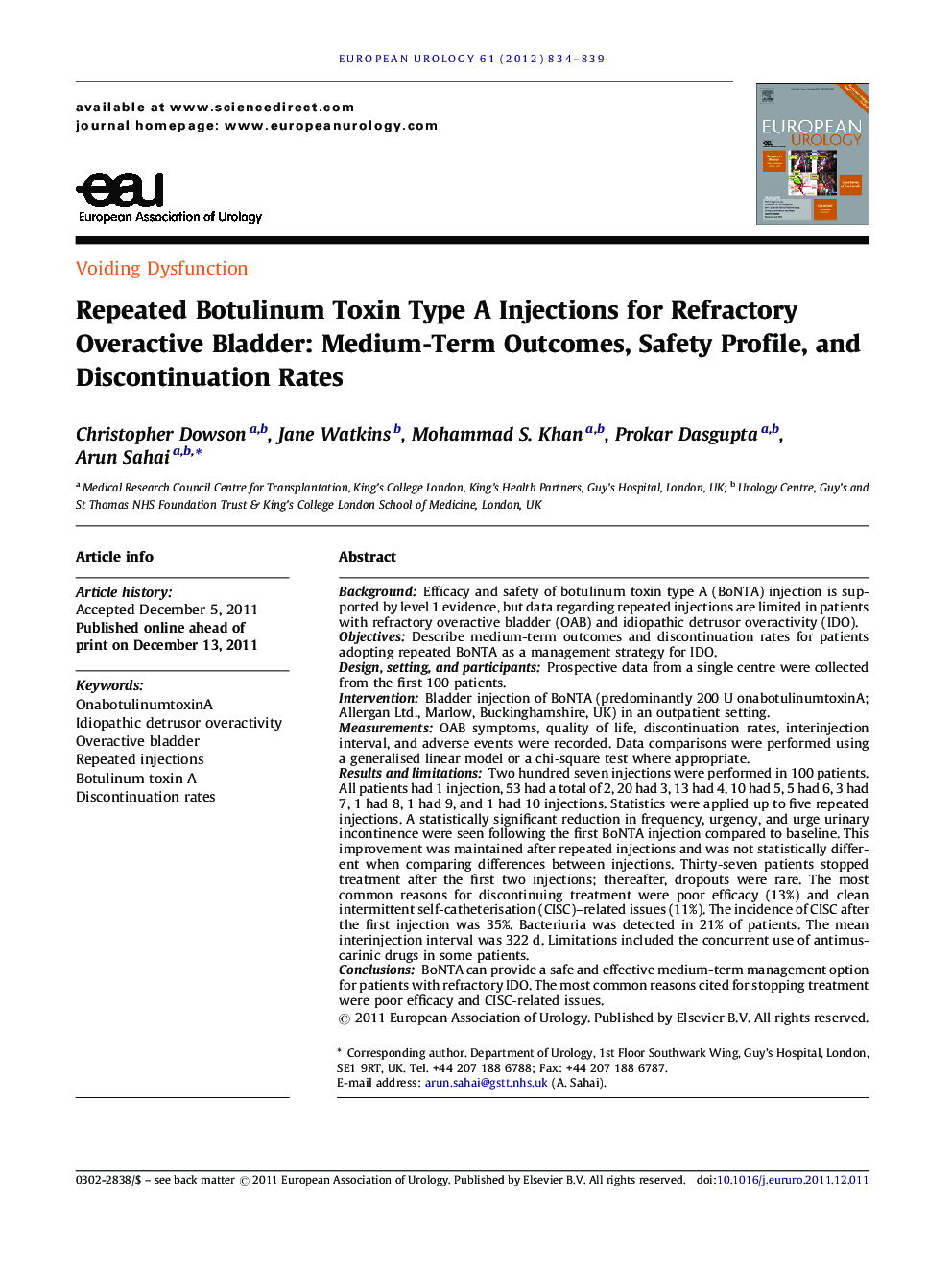| کد مقاله | کد نشریه | سال انتشار | مقاله انگلیسی | نسخه تمام متن |
|---|---|---|---|---|
| 3926878 | 1253157 | 2012 | 6 صفحه PDF | دانلود رایگان |

BackgroundEfficacy and safety of botulinum toxin type A (BoNTA) injection is supported by level 1 evidence, but data regarding repeated injections are limited in patients with refractory overactive bladder (OAB) and idiopathic detrusor overactivity (IDO).ObjectivesDescribe medium-term outcomes and discontinuation rates for patients adopting repeated BoNTA as a management strategy for IDO.Design, setting, and participantsProspective data from a single centre were collected from the first 100 patients.InterventionBladder injection of BoNTA (predominantly 200 U onabotulinumtoxinA; Allergan Ltd., Marlow, Buckinghamshire, UK) in an outpatient setting.MeasurementsOAB symptoms, quality of life, discontinuation rates, interinjection interval, and adverse events were recorded. Data comparisons were performed using a generalised linear model or a chi-square test where appropriate.Results and limitationsTwo hundred seven injections were performed in 100 patients. All patients had 1 injection, 53 had a total of 2, 20 had 3, 13 had 4, 10 had 5, 5 had 6, 3 had 7, 1 had 8, 1 had 9, and 1 had 10 injections. Statistics were applied up to five repeated injections. A statistically significant reduction in frequency, urgency, and urge urinary incontinence were seen following the first BoNTA injection compared to baseline. This improvement was maintained after repeated injections and was not statistically different when comparing differences between injections. Thirty-seven patients stopped treatment after the first two injections; thereafter, dropouts were rare. The most common reasons for discontinuing treatment were poor efficacy (13%) and clean intermittent self-catheterisation (CISC)–related issues (11%). The incidence of CISC after the first injection was 35%. Bacteriuria was detected in 21% of patients. The mean interinjection interval was 322 d. Limitations included the concurrent use of antimuscarinic drugs in some patients.ConclusionsBoNTA can provide a safe and effective medium-term management option for patients with refractory IDO. The most common reasons cited for stopping treatment were poor efficacy and CISC-related issues.
Journal: European Urology - Volume 61, Issue 4, April 2012, Pages 834–839